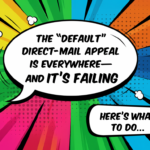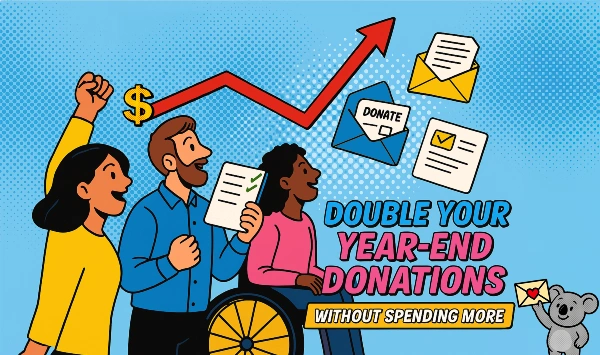I know it’s not controversial to say committees are often a problem for effective fundraising. Almost everybody knows that.
In fact, committees are one of the top causes (along with lack of resources) of ineffective fundraising. Committees cost the nonprofit sector billions of dollars in lost revenue
It doesn’t have to be that way. Committees can be “de-fanged.” They can even be turned into a force for good fundraising. It’s not easy, but I’m going to show you some ideas.
Committees are meant to bring together expertise. Sometimes they do that. Maybe you’ve experienced those good committees: they have synergy and common purpose. Varying viewpoints and different areas of knowledge make them stronger and smarter. The whole is greater than the sum of the parts.
But too often, they don’t bring together expertise. Instead, they pool incompetence. Each member’s opinion gets full hearing, whether they know what they’re talking about or not. And there is often social pressure to have an opinion, regardless of that opinion’s relevance.
- Some committee members want lots of statistics.
- Some think it’s too emotional.
- Others want it to be more formal and businesslike.
- Someone thinks it’s too long. Someone else thinks it’s too short.
- There’s usually someone who wants it to be more pretty. (Letters are so plain and out of style these days.)
- Then there’s the one person who says we ask too much already and should just cancel this project.
All that adds up to a lot of costly bad advice. The piece of writing that goes through a ringer like that will have all the power of an overcooked spaghetti noodle.
So what should we do to prevent that?
Shrink the committee
For committees, the more people, the worse the outcome. Instead of a large group of people with unclear reasons for being there, shrink your fundraising committee down to three or so people — each of whom has a specific area of expertise that’s needed for the project. That should include:
- Fact checker: The person with knowledge to make sure there aren’t incorrect assertions in the message.
- Proofreader: A detail oriented person who can find and eliminate errors. (Often, these first two functions can be done by one person.
- Quality checker: Should be an experienced professional fundraiser who understands best practices and fundraising strategy.
- Signer: The person signing the message should see and agree with what is included. Ideally, this person becomes comfortable with the work and not need to okay everything.
That’s all you really need.
How the committee should work
Here are some ground rules that will help committees work well together:
- Each of these people should focus only on their own remit. A technical expert who’s reading for accuracy should not be commenting on things like word choice and letter length. That person’s opinions about those things are wrong, guaranteed!
- One of the members should be the leader, the person who has final say when there are disagreements.
- “I don’t like it” is never a useful criticism. No matter how much you dislike it.
- The committee members should have the results of fundraising included in their job expectations. Each of them needs to have skin in the game. They should feel the pain if the project does poorly, and the joy of a successful project.
- Complete consensus among members should not be the goal. This leads to wasting time, delay, group think, and lack of critical thinking.
Whether your fundraising is written and designed by staff or outsourced, this slimmed-down, focused committee is far less likely to undermine quality.
Have clear direction
It’s possible you simply can’t shrink your committee this much, or give them the tight focus they should have. These are big changes that might step on toes! So no matter how many people you have on the committee, or how they are willing to work, do what you can of the steps above.
You might also find the following approaches helpful:
- Make sure the principles of effective fundraising are always part of the conversation. A lot of what works is counterintuitive. Committee members may need constant reminding of these things.
- Before the project even starts, the committee should okay a brief that puts in writing the goals and approach. This can prevent the committee from having an open-ended question like, “What should this piece say.” Instead you’re asking a much easier question: “Does this say what we wanted it to say?”
- Set clear expectations and a timeline. Give drop-dead, enforced deadlines. Keep them tight. Committees spending too much time not only increases the mischief that might they might commit — you’ll also keep the work on schedule.
- Seek an OK, not opinions. Be clear that you aren’t asking for opinions and re-writes. You just want a “good to go.”
- Set expectations for the number of approval rounds. One or two is enough. Anything more than that is a self-defeating waste of time.
The more you can move your committees from the “pooling incompetence” category to the expertise category, the better your results will be. And the more joy you’ll have as you create powerful fundraising.
Looking for more ways to save time and raise more money? Our members have access to time-saving templates, checklists, tools, and expert guidance – all designed to make their job easier and their fundraising more effective. Join The Fundraisingology Lab waitlist for access to these powerful resources – and discover how to work smarter, reduce stress, and keep your donors coming back.
Please share your experience by leaving your reply below. We’d love to learn from your experience.











